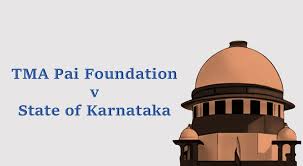Supreme Court Rules on Jurisdiction in Transnational Child Custody Cases
- ByAdmin --
- 29 May 2025 --
- 0 Comments
The Supreme Court of India has recently delivered an important judgment clarifying jurisdictional issues in transnational child custody disputes. The ruling emphasizes the jurisdiction of Indian courts, prioritizes the welfare of the child, and addresses the enforceability of foreign custody orders.
Background
- The dispute involved parents residing in different countries contesting custody of their minor child.
- The father sought to take the child to his country of residence.
- The mother opposed this, citing concerns about the child’s welfare.
- Conflicting judgments from lower courts led to the matter reaching the Supreme Court.
Key Findings of the Supreme Court
- Jurisdiction of Indian Courts:
- Indian courts hold jurisdiction over custody cases if the child has a substantial connection to India, even if the child is not habitually resident here.
- The Court interpreted “ordinary residence” under Section 9(1) of the Guardian and Wards Act, 1890, broadly to include children who have significant ties to India.
- Jurisdiction applies especially when a child is brought to India by one parent without the other’s consent.
- Indian courts hold jurisdiction over custody cases if the child has a substantial connection to India, even if the child is not habitually resident here.
- Paramount Importance of Child’s Welfare:
- The Court reiterated that the welfare and best interests of the child are the primary considerations in all custody decisions.
- Welfare considerations take precedence over strict jurisdictional rules.
- The Court reiterated that the welfare and best interests of the child are the primary considerations in all custody decisions.
- Enforcement of Foreign Custody Orders:
- Indian courts generally respect the principle of comity of courts, which means giving due respect to foreign judgments.
- However, foreign custody orders will not be enforced if they violate Indian public policy or jeopardize the welfare of the child.
- Indian courts generally respect the principle of comity of courts, which means giving due respect to foreign judgments.
Legal Framework and Constitutional Provisions
- Guardian and Wards Act, 1890:
- Section 9(1) states custody petitions must be filed in courts having jurisdiction where the minor ordinarily resides.
- The Supreme Court expanded this to recognize substantial connections as sufficient grounds for jurisdiction.
- Section 9(1) states custody petitions must be filed in courts having jurisdiction where the minor ordinarily resides.
- Article 21 of the Constitution of India:
- Guarantees the right to life and personal liberty.
- Judicial interpretations have included the child’s right to live with dignity and safety under this article.
- Guarantees the right to life and personal liberty.
- Principle of Comity of Courts:
- Encourages mutual respect and enforcement of foreign judgments but does not mandate enforcement that contradicts public policy or child welfare.
Implications of the Judgment
- The judgment clarifies that Indian courts can hear international child custody disputes where there is a meaningful link to India.
- It underscores the principle that the child's welfare is the supreme factor in custody decisions, outweighing jurisdictional technicalities.
- The ruling ensures that Indian courts critically evaluate foreign custody orders before enforcement, protecting children from potentially harmful outcomes.
- It balances the need for international cooperation with safeguarding Indian constitutional values and child protection laws.
Conclusion
The Supreme Court’s decision marks a significant development in Indian family law concerning transnational child custody. By reaffirming the jurisdiction of Indian courts and prioritizing the welfare of the child, the Court has set an important precedent. This ruling will guide future custody cases involving international elements, ensuring that children's rights and well-being remain at the forefront, regardless of cross-border complexities.
































































































































































































































































































































































































































































































































































































































































































































































































































































































































0 comments